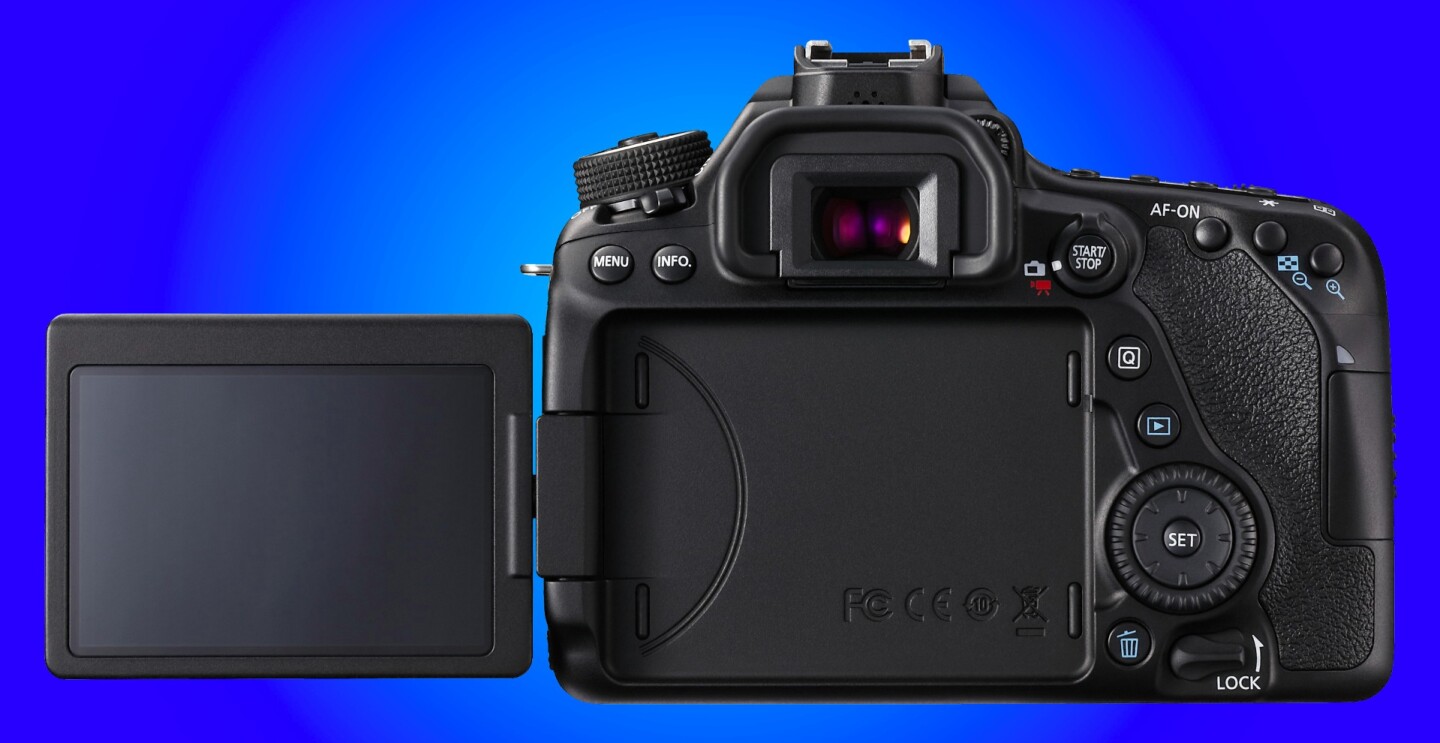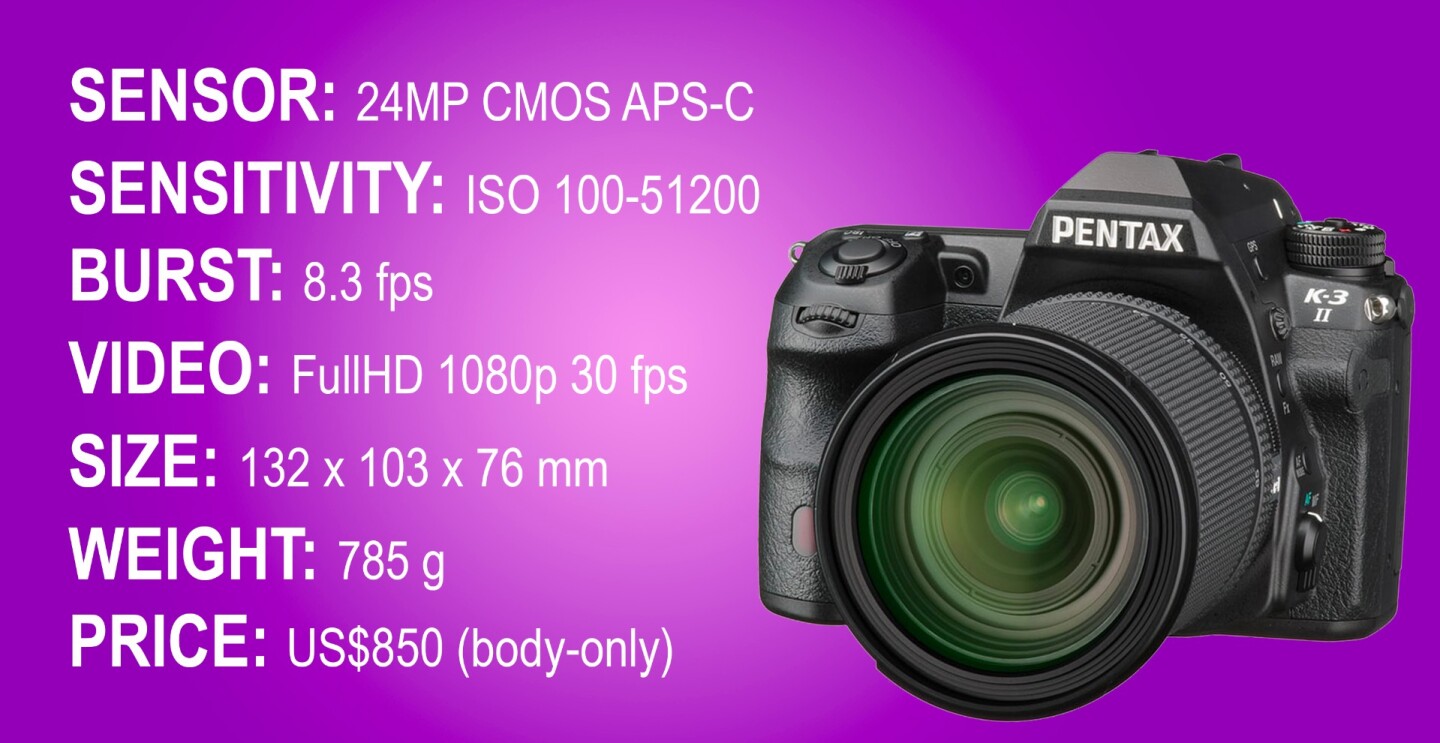We've already looked at the best DSLR cameras for beginners, and those with full frame sensors. But what if you're looking for a DSLR with a bit more grunt under the hood than your typical entry level offering, but don't need a full frame sensor? Well you are in luck, because now we are going to consider the best DSLRs with APS-C size sensors available in 2016.
The cameras included here are typically used by enthusiasts or professional photographers, and can offer levels of quality and performance needed to keep them happy. Users who are still deciding what type of camera they need might also be considering mirrorless cameras, and we'll be looking at high-end mirrorless cameras in our next installment.
Canon EOS 80D

Launched at the start of this year, the EOS 80D arrived as a follow-up to the 70D, and one which was designed for both photographers and videographers. Inside, it houses a 24-megapixel APS-C CMOS sensor which helps it deliver an ISO range of 100 to 16,000 (expandable to 25,600) and a maximum shooting speed of 7 fps. There's also a 45-point autofocus system to keep things sharp.
On the video front the 80D can record Full HD 1080p video at up to 60 fps. While this might not be quite up there with some rival cameras, particularly the mirrorless competition, Dual Pixel CMOS AF will give good autofocus performance. Around back there's a touchscreen monitor, and the camera boasts built-in Wi-Fi and NFC connectivity for easy image sharing and remote control. The Canon EOS 80D costs $1,100 body only.

Product page: Canon EOS 80D
Buy now on Amazon
Nikon D7200

The D7200 is Nikon's equivalent to the Canon 80D and uses a comparable 24-megapixel APS-C CMOS sensor. Paired with an EXPEED 4 image processing engine it offers an ISO range of 100 to 25,600 (expandable up to 102,400 with black and white modes) and a respectable continuous shooting rate of 6 fps. Autofocus is equally snappy thanks to a 51-point autofocus array, with 15 cross-type sensors.
At a time when 4K video recording is becoming more common, the maximum Full HD 1080p 60 fps (with a 1.3x crop) or 30 fps otherwise, of the D7200 can be slightly disappointing, but was the norm when the camera was released back in 2015. Equally, the camera lacks the touchscreen features which are now expected by many photographers. That said, built-in Wi-Fi is on hand for sharing and remote shooting, and should keep the social sharers among us happy. The Nikon D7200 currently costs $1,000 body only.

Product page: Nikon D7200
Buy now on Amazon
Pentax K-3 II

Pentax makes some great DSLRs, for which it arguably doesn't get the credit it deserves. The K-3 II is a classic example of this, it's a high quality flagship APS-C DSLR which can more than hold its own with those from better-known brands. It not only has a 24-megapixel CMOS sensor, an ISO of 100 to 51,200, and continuous shooting at 8 fps, but also a ruggedness, weather resistance and build quality normally only associated with higher end cameras.
Other impressive features include sensor-shift technology which can be used to offer image stabilization, or Pixel Shift Resolution which (as we found out in our tests) gives better quality images than other 24-megapixel shooters. Unfortunately, video is pegged at a maximum of Full HD 1080p at 30 fps, and the rear monitor lacks any touchscreen abilities. There's also no built-in Wi-Fi, but there is GPS. The Pentax K-3 II costs around $850 body only.

Product page: Pentax K-3 II
Buy now on Amazon
Sony A77 II

The Sony A77 II might be getting on a bit now, it was released in 2014, but it's still a good option for A-mount shooters. The SLT (it's technically not a true DSLR because it uses a translucent mirror) is another camera with a 24-megapixel CMOS sensor and an ISO range of 50 to 25,600, but this time with a speedy continuous shooting rate of up to 12 fps.
Autofocus is also relatively zippy thanks to an autofocus system with 79 phase detection points. On the video front there's Full HD recording at 1080p 60 fps, and the camera has a 3.5-mm microphone input with audio level monitoring and adjustment. Unlike true DSLRs, the A77 II features an OLED electronic viewfinder rather than an optical viewfinder. This is paired with a tilting three-inch monitor, which isn't a touchscreen. There is however built-in Wi-Fi and NFC for easy sharing. The Sony A77 II costs $1,200 body only.

Product page: Sony A77 II
Buy now on Amazon
Canon 7D Mark II

The 7D Mark II is Canon's fast shooting flagship APS-C DSLR. It packs a 20.2-megapixel sensor and an ISO range of 100 to 16,000 (expandable to 512,000). On the speed front it can shoot bursts of 10 fps, while an autofocus system with 65-point cross-type AF points will keep things in focus and offers good customization options so that you can tailor it to your subject.
Video recording is possible at up to Full HD 1080p 60 fps, and Dual Pixel CMOS AF helps offer smooth autofocus tracking. The lack of a touchscreen or built-in Wi-Fi might disappoint users also eyeing up newer models. However, the camera can now be purchased bundled with a W-E1 adapter, which pops into the SD-card slot to enable wireless file transfer, along with remote shooting. The Canon 7D Mark II currently costs $1,350 for the body (no lens included) and the W-E1 adapter.

Product page: Canon 7D Mark II
Buy now on Amazon
Nikon D500

When Nikon announced its D500 DSLR at the start of the year, it was billed as packing the power of the flagship full frame D5 into a considerably more compact body. As we found when we went hands-on, though the 20.9-megapixel APS-C sensor lacks the size of that in the D5, the camera is a beast. The highlight for us was the speedy 153-point autofocus system (with 99 cross-type points) which brings the sort of focusing power normally reserved for full frame professional flagships.
It also has a native ISO range of 100 to 51,200 (which is expandable to a crazy 1,640,000 equivalent) and continuous shooting at 10 fps. 4K video recording is also possible at 30 fps, and the rear monitor is both tilting and a touchscreen. The D500 also makes use of Nikon's SnapBridge wireless sharing and shooting via Wi-Fi or low-power Bluetooth, which we've found to be the best wireless connectivity of any dedicated camera we've used. The Nikon D500 costs $1,800 body only.

Product page: Nikon D500
Buy now on Amazon
Conclusion…
APS-C DSLRs no longer play second fiddle to their full frame counterparts. As we've seen here they can more than hold their own, especially the flagship models. While a couple of the cameras included here are beginning to show their age and could be due an upgrade in 2017, they're still capable of turning out great quality images, and performing well.
Of the bunch there are a couple which stand out, the Pentax K-3 II offers a high build quality and ruggedness for the price, and that's before you consider the benefit of sensor based image stabilization. It's also a very capable DSLR that's only let down slightly by its autofocus system, which is bettered by some rivals.
There's also the Nikon D500 which is probably the best APS-C sensor DSLR yet. It packs flagship DSLR specifications into a compact body, offers blistering fast autofocus, 4K video recording, and some of the best wireless connectivity we've used on any camera.
However, is 2016 a sensible time to be investing in a DSLR? Mirrorless cameras are not only catching up, but arguably bettering DSLRs in many ways, especially at this enthusiast level. As such, our next camera guide will look at the best high end mirrorless cameras, many of which are direct competition for the cameras here.
















